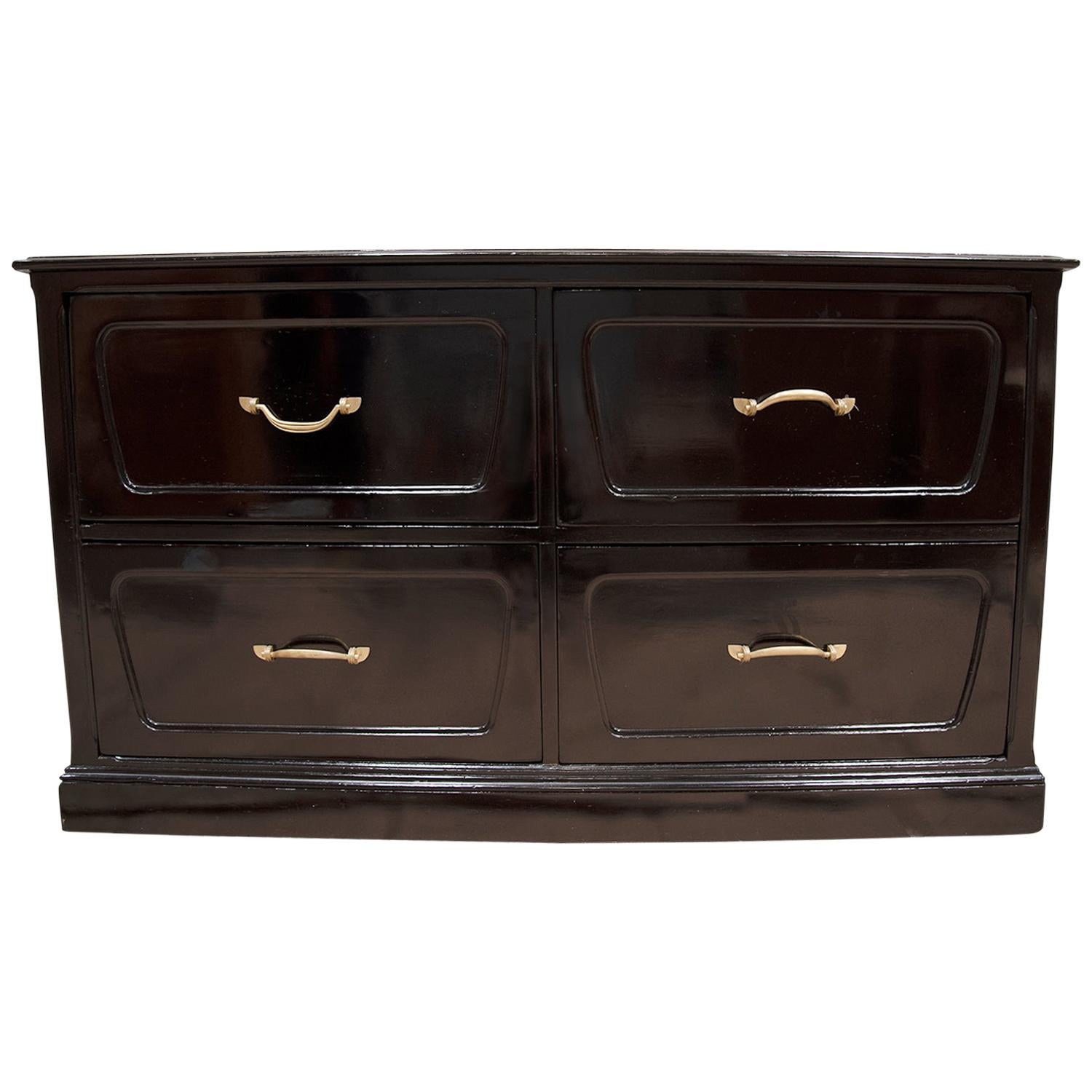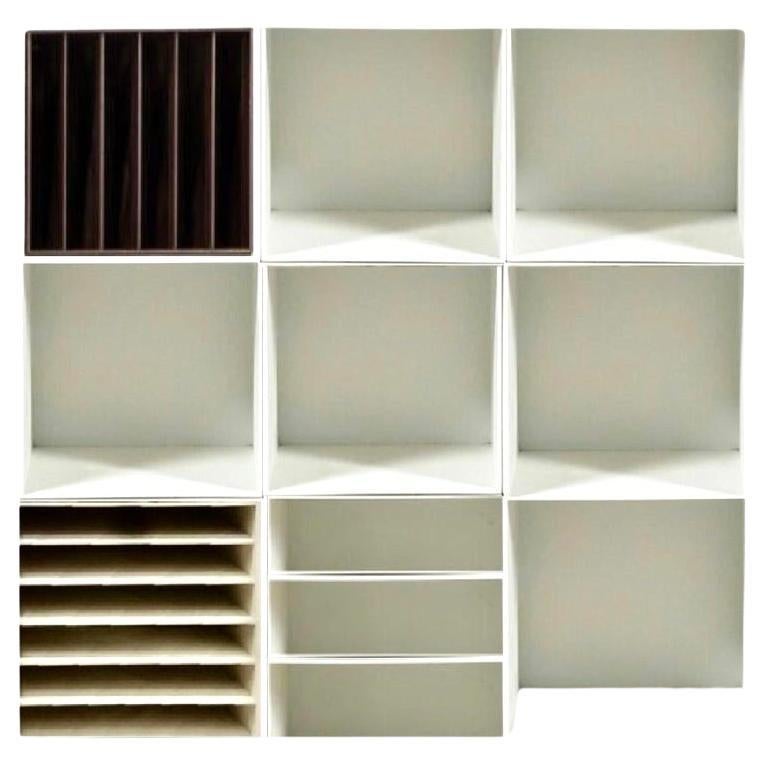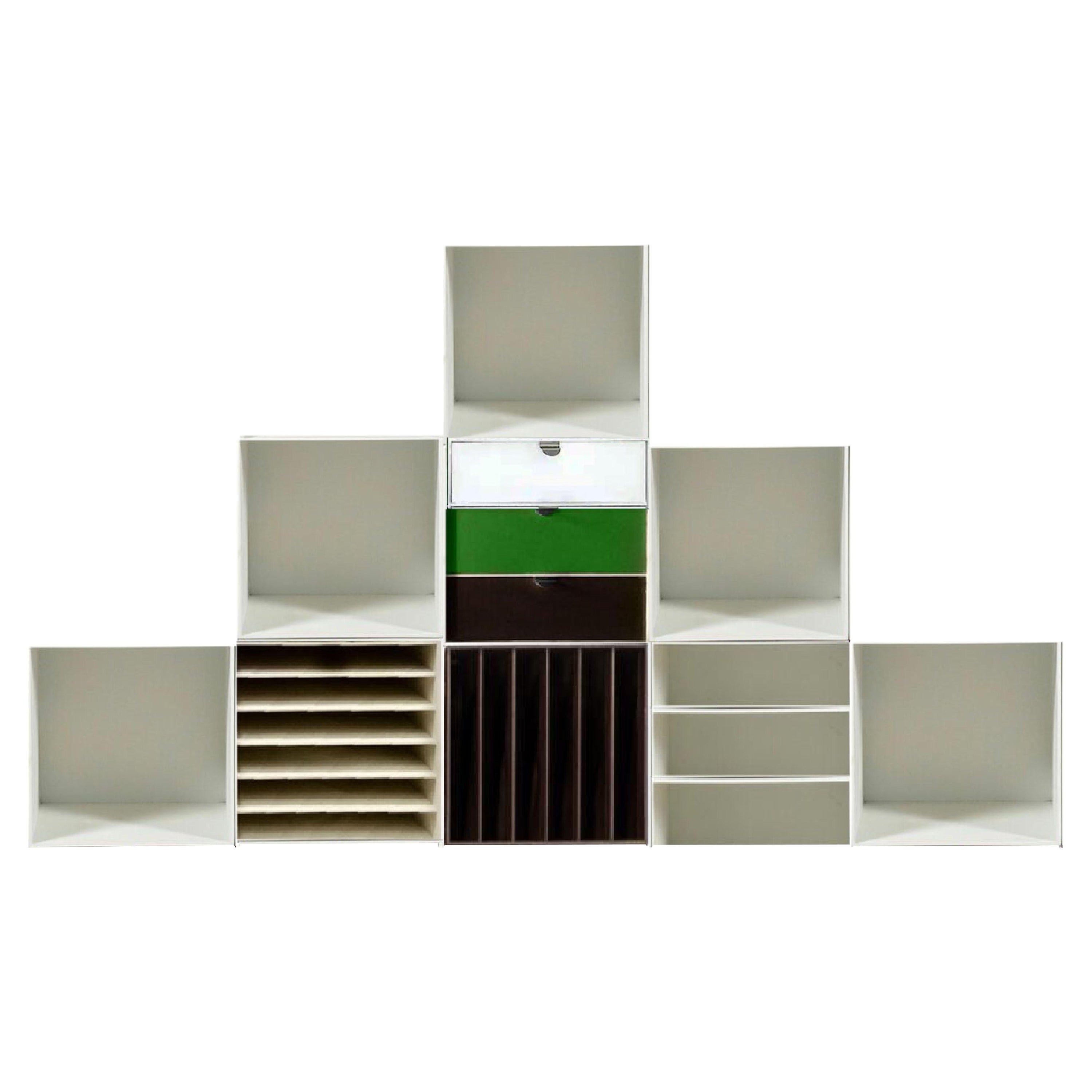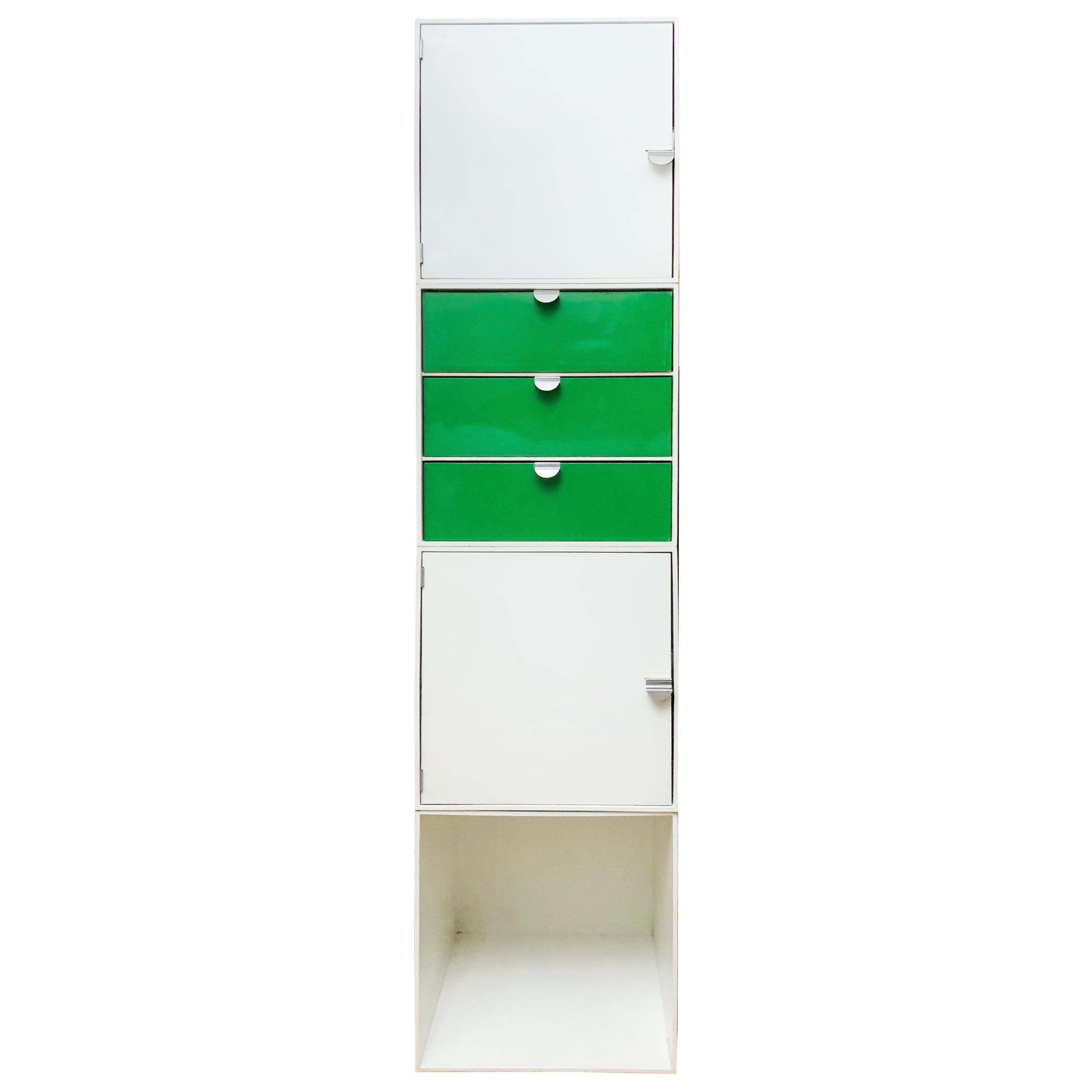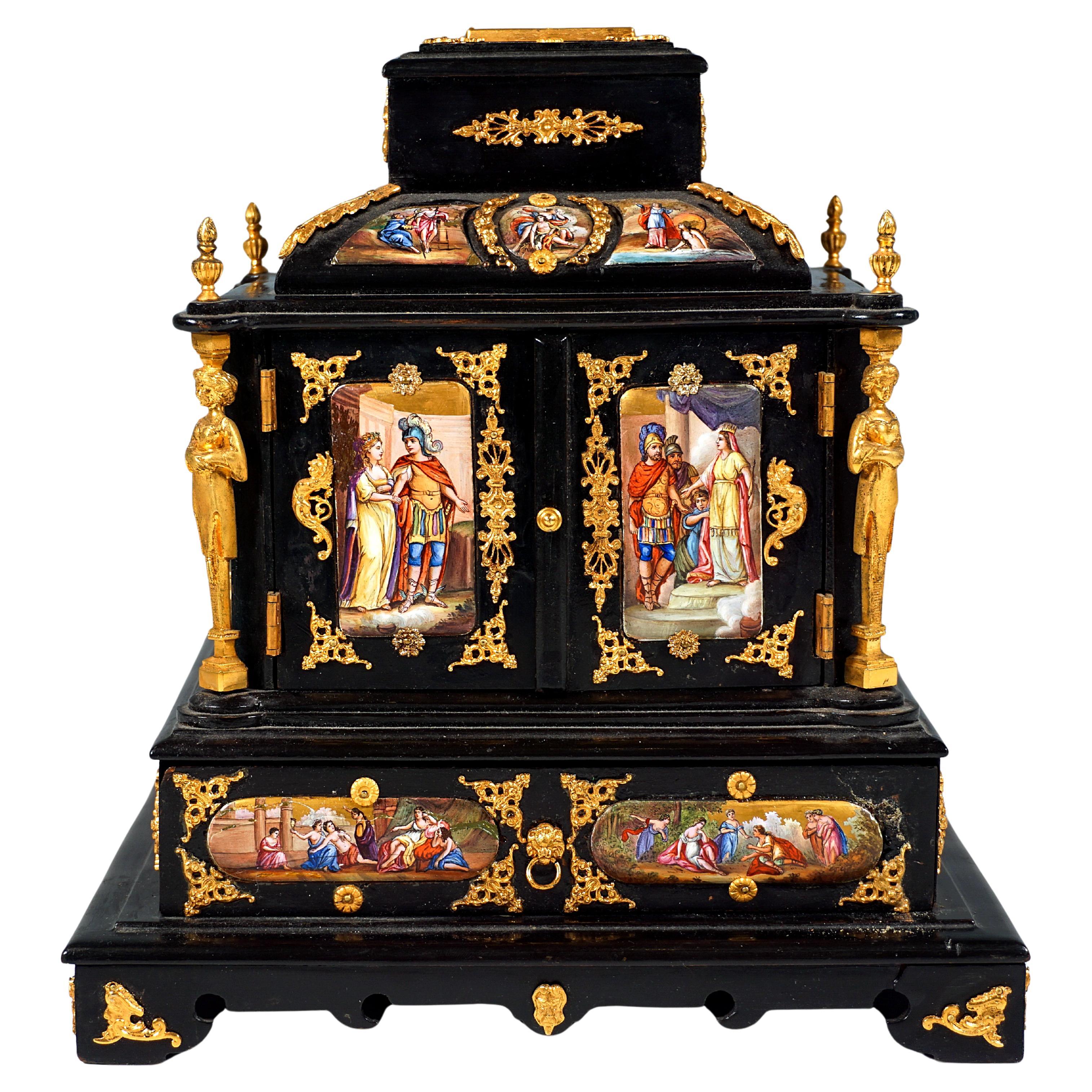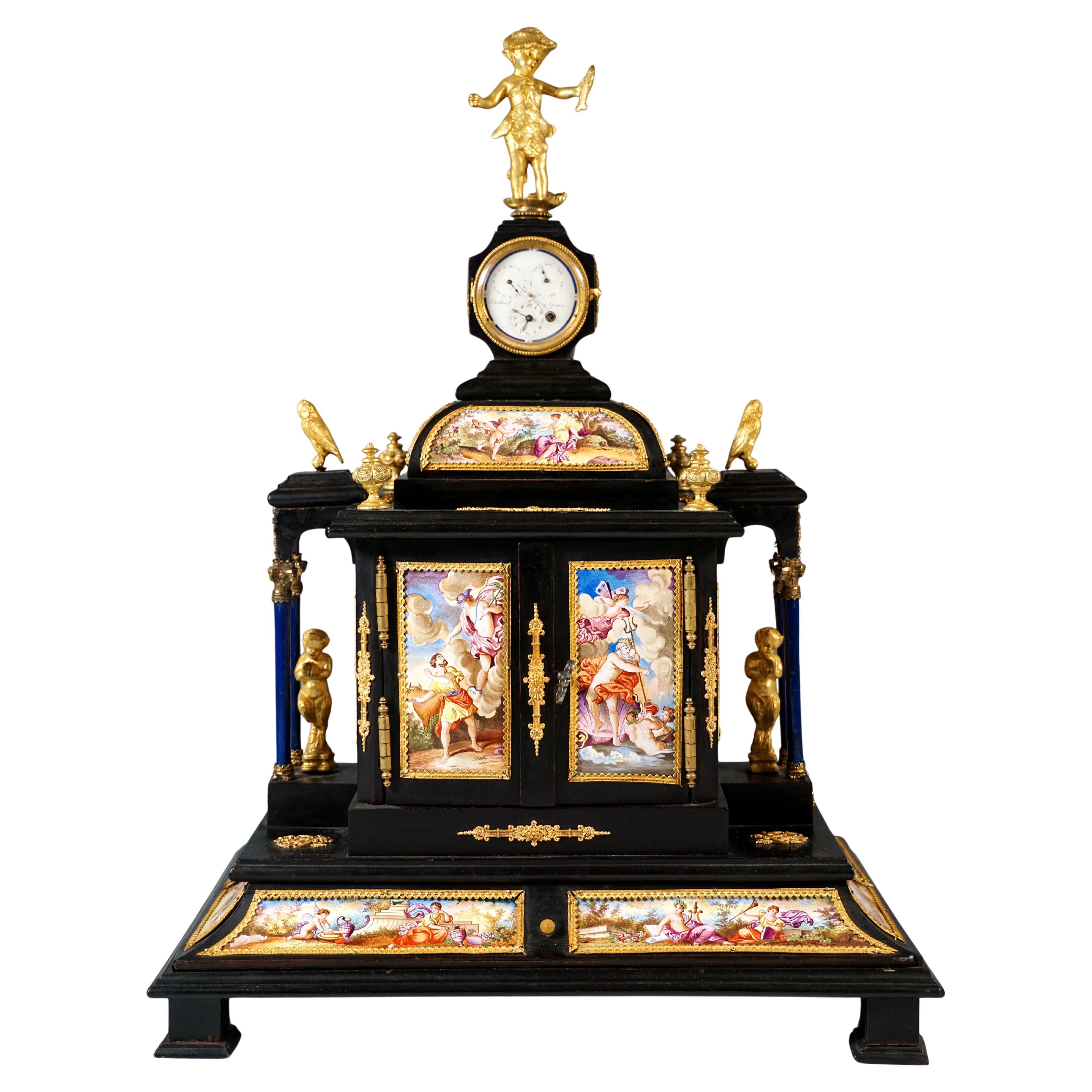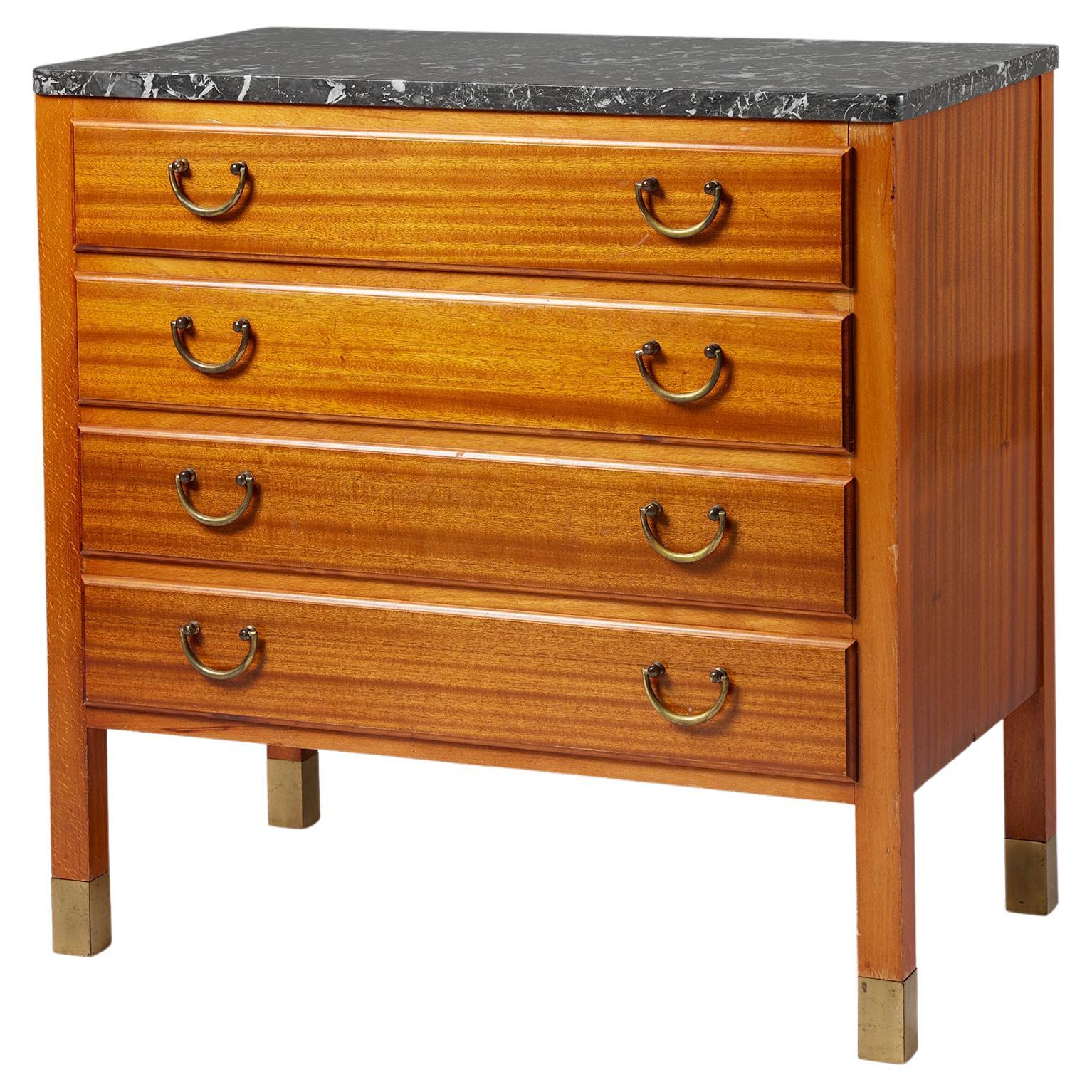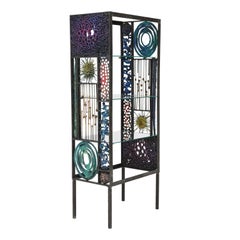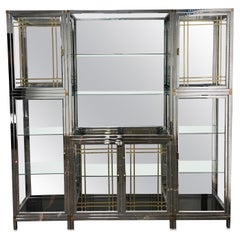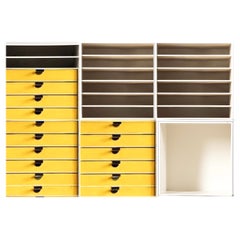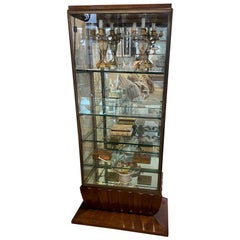
Important Eames/Saarinen Modular Case Goods
View Similar Items
Want more images or videos?
Request additional images or videos from the seller
1 of 11
Important Eames/Saarinen Modular Case Goods
About the Item
- Dimensions:Height: 57.5 in (146.05 cm)Width: 54 in (137.16 cm)Depth: 18 in (45.72 cm)
- Style:Mid-Century Modern (Of the Period)
- Place of Origin:
- Period:
- Date of Manufacture:c. 1941
- Condition:Wear consistent with age and use. In remarkably good original condition, with great patina and only minor wear consistent with age and use. Lightly refurbished and polished.
- Seller Location:New York, NY
- Reference Number:1stDibs: LU8285787160
About the Seller
4.9
Recognized Seller
These prestigious sellers are industry leaders and represent the highest echelon for item quality and design.
Established in 1995
1stDibs seller since 2007
257 sales on 1stDibs
Typical response time: 1 hour
Associations
20th Century Specialists
Authenticity Guarantee
In the unlikely event there’s an issue with an item’s authenticity, contact us within 1 year for a full refund. DetailsMoney-Back Guarantee
If your item is not as described, is damaged in transit, or does not arrive, contact us within 7 days for a full refund. Details24-Hour Cancellation
You have a 24-hour grace period in which to reconsider your purchase, with no questions asked.Vetted Professional Sellers
Our world-class sellers must adhere to strict standards for service and quality, maintaining the integrity of our listings.Price-Match Guarantee
If you find that a seller listed the same item for a lower price elsewhere, we’ll match it.Trusted Global Delivery
Our best-in-class carrier network provides specialized shipping options worldwide, including custom delivery.More From This Seller
View AllArt and Trade Shop Unit Cabinet
By Eero Saarinen
Located in New York, NY
Custom and well-crafted modular sliding-door cabinet produced by Eric R.E. Schuster of the Art and Trade Shop of New York City in the early 1940s. Styl...
Category
Vintage 1940s American Mid-Century Modern Cabinets
Materials
Birch
Carl Koch Techbuilt Spacemaking Furniture
By Carl Koch
Located in New York, NY
Unit furniture of Philippine mahogany with white Masonite panels consisting of a module with sliding Masonite doors and a double wide module with an open front. Designed by Harvard-educated, Boston-area architect, designer, and urban planner Carl Koch as a corollary to his prefabricated Techbuilt houses and produced in 1955.
Koch was a pioneering champion of prefabrication in housing in mid-century America, first with his much-publicized but ill-fated all-steel Lustron houses in the late 1930’s, then with his more successful wooden Tech-Built houses, introduced in 1953. In At Home with Tomorrow, his 1958 paean to prefabrication, he lays out his opposition to the traditional hammer-and-handsaw construction methods that remained dominant even with conceptually modernist structures. His designs generally hewed to a regional brand of modernism rather than orthodox international style, taking into account local topography and climate—his iconic form is an A-frame with a pitched roof, more sensible in New England winters than a flat roof (though there are such Techbuilt designs). The basic Techbuilt formula suggested that modular, industrial production methods of the components combined with knock-down shipping and on-site assembly equalled lower cost and less waste. Variety and individuality could be achieved in how the elements were combined.
This underlying philosophy involving modularity, flexibility, and industrial production methods applied to Spacemaking furniture as well, although interestingly enough, the furniture design preceded the architectural application, as Koch (et al) had submitted a version to the 1947 MoMA Low-Cost Furniture Competition (and so these units also preceded the famous 1951 Eames Storage Unit, a conceptually similar idea executed with metal framing). The furniture line began with requests for freestanding wardrobe...
Category
Vintage 1950s American Mid-Century Modern Cabinets
Materials
Mahogany, Masonite
$45,000 / set
Mid-Century California Unit Furniture Group
By Brown Saltman
Located in New York, NY
Unit furniture group with a California mid-century vibe, possibly a DIY project, comprising four boxes, all of Douglas fir plywood, sitting atop a plinth base, presented here in a sk...
Category
Vintage 1940s American Mid-Century Modern Cabinets
Materials
Wood, Masonite, Plywood
$7,500 / set
James Bearden Segment Etagere
By James Bearden
Located in New York, NY
"Segment Étagère” a sculptural work in torch-cut and polychromed steel with fused bronze, solvent dyes, and glass enamel, with four glass shelves. By American artist James Bearden. The rectangular étagère, with its dramatic yet delicate composition and juxtaposition of shapes and colors drawn from Bearden’s evolving vocabulary, is perched atop four slender legs. Bearden's work was featured in a 2020 solo exhibition at the NY Design Center titled "James Bearden: Technical and Aesthetic Revelations," in an article in the January 2017 Interior Design Magazine; in an introspective feature on 1stdibs; and in a feature article in DSM Magazine. The étagère is part of a group of case pieces being offered individually--see the photo of three cabinets below. Custom sizes and colors are available upon request. In an introduction to the 2020 exhibition, curator Kartrina Weinberg wrote: "In the two years after the artist’s last solo exhibition — where the material reality of steel was evident in both its title and monochromatic appearance — Mr. Bearden sought to break free from pre-conceived judgment of his medium, as well as the persistent misnomers applied to his art. While subtle color play has always existed in his previous works, the development in his coloring technique — from painted polychrome to dyed glass enamel — allowed for dramatic saturation and stunning complexity in his new palette, bringing heightened immediacy to his biomorphic and anthropomorphic imagery. The artist had always challenged the gravitational reality of steel, but he has found new expressions towards verticality and delicacy, transcending material and elevating function. The open compositions, ranging from ornamental tracery to dynamic use of negative space, allow for the interplay of light and air, animating the environment with ever-changing viewing possibilities. This exhibition took inspiration from the naturalist traditions and fantastical imagery of Early Netherlandish paintings...
Category
2010s American Mid-Century Modern Vitrines
Materials
Bronze, Enamel, Steel
Gae Aulenti Pipistrello Lamp for Martinelli Luce (Largest Size)
By Gae Aulenti, Martinelli Luce
Located in New York, NY
Pipistrello ("Bat") lamp designed by Italian architect Gae Aulenti for Martinelli Luce in 1965. A vintage example, circa late 1960's, of this iconic Neo-Rationalist design. A particu...
Category
Vintage 1960s Italian Mid-Century Modern Table Lamps
Materials
Aluminum, Chrome, Stainless Steel
Sister Mary Corita Exhibition Poster/Announcement, Morris Gallery 1966
By Sister Corita
Located in New York, NY
Exhibition poster and announcement for a show of Sister Mary Corita Kent's new serigraphs held at New York City's Morris Gallery from December 7-31, 1966, ...
Category
Vintage 1960s American Mid-Century Modern Posters
Materials
Paper
You May Also Like
Vintage Modular Chrome and Brass Modular Display Case
By Milo Baughman
Located in W Allenhurst, NJ
This gorgeous display case is made up of 5 chrome, brass, glass and mirror case pieces and 1 mirror back open shelf. Bottom case pieces have black glass on the bottom. Each piece ref...
Category
Mid-20th Century American Mid-Century Modern Cabinets
Materials
Brass, Chrome
Black French Mid-Century 4-Drawer Case Piece
Located in Hawthorne, CA
This striking Black French Mid-Century 4-Drawer Case Piece effortlessly combines the sleek elegance of French design with the timeless appeal of mid-century modernism. Crafted with p...
Category
20th Century French French Provincial Cabinets
Materials
Hardwood
$3,875 Sale Price
61% Off
Vintage Palaset Palanox Modular Storage Box Set of 6, Yellow, Finland, 1972
By Palaset, Ristomatti Ratia
Located in Brooklyn, NY
Vintage Palaset Palanox modular storage box set of 6, White, Yellow, Finland, 1972
Palaset Palanox, multicolored stackable boxes that allow you to b...
Category
Mid-20th Century Finnish Scandinavian Modern Commodes and Chests of Drawers
Materials
Metal
Vintage 1930s French Art Deco Display Case / Vitrine
Located in Los Angeles, CA
Vintage 1930s Art Deco display case made in nickel plated with original matching adjustable four glass shelves, mirrored back and bottom shelf, f...
Category
Vintage 1930s French Art Deco Cabinets
Materials
Metal, Chrome
Vintage Palaset Palanox Modular Storage Box Set of 9, White Brown Finland, 1972
By Ristomatti Ratia, Palaset
Located in Brooklyn, NY
Vintage Palaset Palanox modular storage box set of 9, White and Brown, Finland, 1972. Palaset Palanox, multicolored stackable boxes that allow you to build your own shelf, only prod...
Category
Mid-20th Century Finnish Scandinavian Modern Commodes and Chests of Drawers
Materials
Metal
Vintage Palaset Palanox Modular Storage Box Set of 10, White, Finland, 1972
By Palaset, Ristomatti Ratia
Located in Brooklyn, NY
Vintage Palaset Palanox modular storage box set of 10, White, Finland, 1972. This set includes 5 white open boxes, 2 white 3-part boxes, 1 white drawer, 1 brown drawer and 1 green d...
Category
Mid-20th Century Finnish Scandinavian Modern Commodes and Chests of Drawers
Materials
Metal
Recently Viewed
View AllMore Ways To Browse
Eames Bench
1930s Metal Cabinet
1980s Metal Cabinet
Antique Brass Plate Stand
Pilaster Columns
18th Century China Cabinet
18th Century Chinese Cabinets
1979 American Furniture Cabinet
Curio Cabinets
Oak Tv Cabinet
Regency Door Panels
Tall Modern Display Cases
Velvet Display Case
Antique Curios
Card Cabinet
Marble And Glass Mirrored Cabinet
Marquetry Wood Inlay Panel
Victorian French Doors

